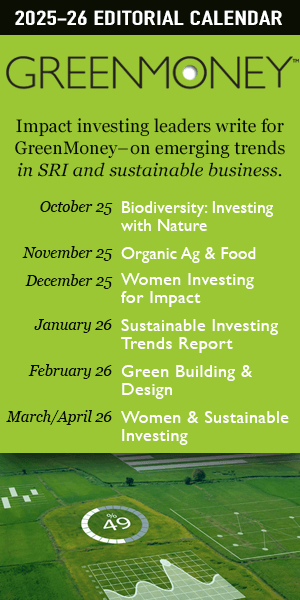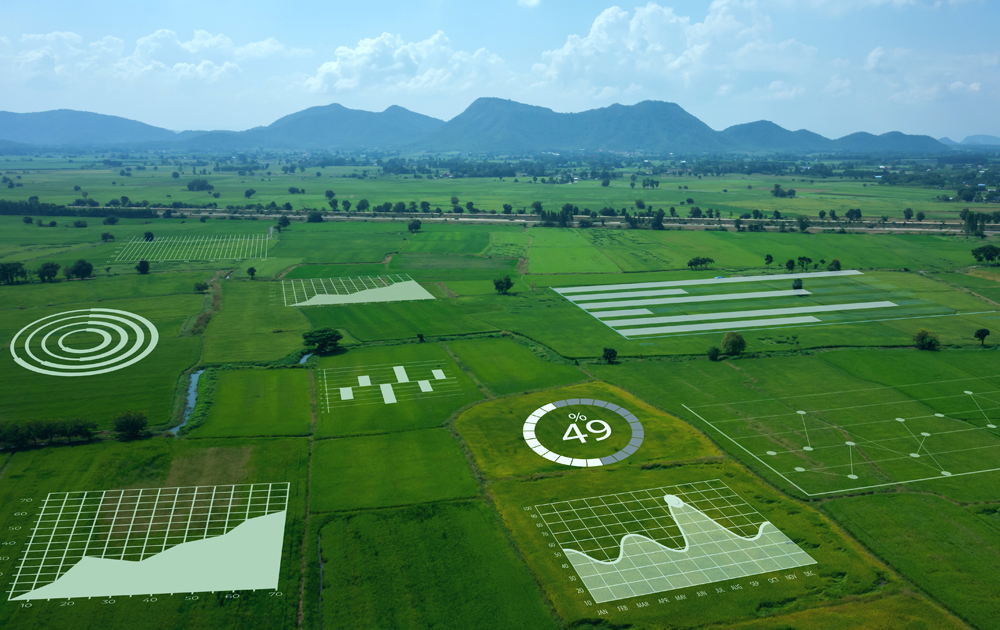 Land Trust Funding – Sustainable Investment Management for Parks and Protected Areas
Land Trust Funding – Sustainable Investment Management for Parks and Protected Areas
Do you Love Your Local Land Trust?
If the answer is “Yes, I go hiking on the local trails,” you are not alone. There are currently more than 1,700 Land Trusts including 467 accredited Land Trusts1 in the United States. Chances are good that right now, thousands of nature lovers are out enjoying land trust trails. But have you ever wondered how they are financed? When you are called on to make a donation to support your land trust, or to join the staff or Board, this will help give you some insight into the current and rapidly changing landscape of finance for community protected areas.
In a prior GreenMoney article2, we described how national parks and protected areas in remote parts of the world have attracted permanent financing using endowments. This helps provide income – and sustainable conservation financing for national parks in areas that do not have adequate financial resources. Major donors including governments and conservation organizations have collaborated to fund the “crown jewels of nature”, which helps make sure we can still have jaguars in the forests of Suriname, dolphins in the Caribbean, red pandas in Bhutan and mountain gorillas in the Virunga mountains of Uganda.
In the United States, the Land Trust movement has grown organically. It sprang from the passion and commitment of individuals and communities who decided that some fields and forests, lakes and streams are too precious to risk development. Through a combination of land donation and acquisition, Land Trusts have been used to set aside land for the public and for nature, forever. There are now over 61 million acres under conservation, more land conserved than in all the national parks of the United States combined.3
The most common financial needs for land trusts are generally in three categories:
- Cash flows are needed every year to maintain properties held in trust
- The land trust organization operating costs, including outreach, staffing and facilities
- Acquisition of new properties

The normal fundraising activities of most Land Trusts have historically placed a major focus on the second and third needs. Annual member dues and an annual fund drive often finance the organization’s outreach and staff. Capital campaigns are the big fundraisers we see intermittently when a property becomes available. The Land Trust and its donors scramble to pay the purchase price for a property. Often these are time-limited opportunities, as a high-value property may be available for purchase before development occurs.
To meet these needs, operating cash flows are normally raised and placed in highly liquid checking and short-term bond accounts. For land acquisition, any investments held until purchase are usually invested in safe bonds and Certificates of Deposit (CDs) timed to mature just before money is needed to close the transaction.
In recent years a large new financial need has emerged for Land Trusts. It is a problem borne out of the success of these organizations – how to assure that cash flows are available every year to maintain properties held in trust.
Many Land Trusts began by negotiating with local families and companies for land that was often donated with specific requirements, sold at a below-market price, or purchased as a result of a community fundraiser. Often without resources, start-up Land Trusts turned to their city or county government or the community parks district to take over management on a permanent basis. This allowed many Land Trusts to be highly transactional – and light on cost and administration.
Now there are many situations where that no longer works, and Land Trusts find that they are responsible for the long-term care and maintenance of valuable properties. Many small governments, including, towns, cities, counties, and parks districts are just making ends meet and cannot afford to take on the expense of managing more properties – no matter how good they are for the community.
There are also some types of properties that “just don’t fit the plan.” For instance, a Land Trust might obtain a conservation easement on 2,000 feet of salmon stream running through 5,000 acres of a dairy farm. What is a Park District going to do with that? The answer is usually that the landowner or the Land Trust owns the responsibility, and cost, for maintaining that stream in pristine condition.
It is not unusual for a mature Land Trust to have a combination of properties they have provided for local parks as well as many properties and conservation easements they have put on their own books for permanent stewardship. But that creates a challenge – there is usually not enough money for that land stewardship while continuing outreach and growth and paying for the Land Trust’s staff and facilities. For that reason, at a certain point most Land Trusts want to create a method for reliable permanent financing. This is usually done through rents and by creating endowments that provide income.

According to Cullen Brady, Director of the Bainbridge Island Land Trust in Washington State, when a property owner offers a new property for donation, they usually have a person who is motivated to keep a beautiful piece of land the way it is for many generations. Cullen and his team ask the donor for an accompanying donation of funds that can endow and create a stream of income for the property. That allows money for maintaining trails, cleaning up trash, monitoring watersheds and other environmental systems, and removal of invasive species.
However, in situations where the land is being acquired at or below market, the purchase by the Land Trust rarely involves accepting a generous endowment from the seller. In a rare case, there is rental income that can help support the property, but usually it takes another significant cash raise to create endowment funding. While this is often a challenge, the long-term benefits of having endowed funding are well worth the work.
Sustainable Income and Sustainable Investing
Each Conservation Trust’s Board sets its own goals, but it is common to see a Spending Policy Rate of 4.00% (e.g., 4.00% for annual distribution). That means that if a property requires $4,000 per year for maintenance, it requires $100,000 earning interest to provide that income. Most organizations set an Investment Policy goal for a total return of 6.50% in order to use the 4.00% income and have the ability to offset inflation (e.g., 2.50% reinvestment so income slowly grows over time as the endowment grows by 2.50% yearly).
In addition, because long-term endowment investments are typically balanced portfolios of stocks and bonds, an “average balance method” is usually used during volatile periods when balances fluctuate. This is simpler than it sounds, and just involves using the average of the last 3-, 4- or 5-years’ fiscal year-end balance, then multiplying that number by the “Spending Policy Rate” (e.g., 4.00%). This has the remarkable effect of smoothing returns and creating enhanced predictability for that needed stream of revenue.
Sustainable investment requirements are also set by the Board and spelled out in the Investment Policy Statement. There may be environmental, social and governance (ESG) exclusions, such as to avoid companies involved in damaging environmental processes like timber, mining, or fossil fuel extraction. Preferences may be articulated for investing in companies with superior environmental management and leadership in reducing greenhouse gas emissions (GHG). These have become common requirements for endowments of environmental non-profits.
Reporting and Monitoring
Land Trusts not only want good returns for the budget cycle, but also proficient and competent documentation of the investment process; they know that a large donor considering contributing to the endowment will demand such documentation, as well as evidence of adherence to sustainability standards.

In it For the Long Run
Land Trust endowments need reliable income and enough portfolio growth to keep pace with inflation. To achieve that, overall asset allocation is the most important driver of performance. Keeping fees low, using a blend of passive and active investments and using sustainable investment criteria can all contribute to return.
Land Trusts are finding that, like their cousins, Conservation Trust Funds for national parks, having an endowment can make all the difference in achieving sustainable, long-term funding for land management.
Article by Jack O’Connor and John S. Adams, who are both members of The Arbor Group at UBS Financial Services Inc at 925 4th Avenue, Suite 3100, Seattle, WA, Member FINRA/SIPC. They are part of a team of investment professionals that provide investment services for non-profit endowments, families, and charitable trusts.
Disclosures
The information contained in this article is not a solicitation to purchase or sell investments. Any information presented is general in nature and not intended to provide individually tailored investment advice. The strategies and/or investments referenced may not be suitable for all investors as the appropriateness of a particular investment or strategy will depend on an investor\’s individual circumstances and objectives. Investing involves risks and there is always the potential of losing money when you invest. The views expressed herein are those of the author and may not necessarily reflect the views of UBS Financial Services Inc.
As a firm providing wealth management services to clients, UBS Financial Services Inc. offers investment advisory services in its capacity as an SEC-registered investment adviser and brokerage services in its capacity as an SEC-registered broker-dealer. Investment advisory services and brokerage services are separate and distinct, differ in material ways and are governed by different laws and separate arrangements. It is important that you understand the ways in which we conduct business, and that you carefully read the agreements and disclosures that we provide to you about the products or services we offer. For more information, please review client relationship summary provided at https://ubs.com/relationshipsummary or ask your UBS Financial Advisor for a copy.
Certified Financial Planner Board of Standards Inc. owns the certification marks CFP® and CERTIFIED FINANCIAL PLANNER™ in the U.S. CIMA® is a registered certification mark of the Investment Management Consultants Association, Inc. in the United States of America and worldwide. For designation disclosures visit- https://www.ubs.com/us/en/designation-disclosures.html


















